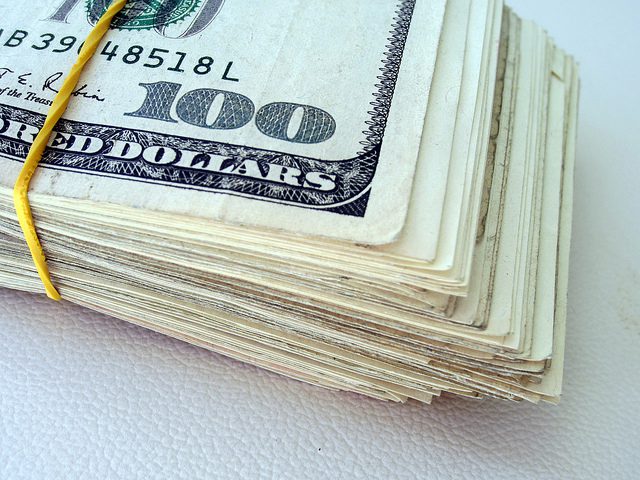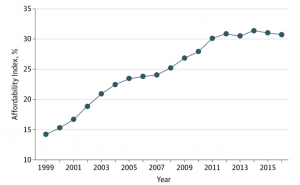A new paper by Ezekiel Emanuel, Aaron Glickman and David Johnson, published in the JAMA Network reveals that working people spend twice as much of their income on health care today as they did in 1999: A powerful signal that health care has become increasingly unaffordable.
The cost of health care has become so prohibitive that one in four Americans say that they postpone it. And, almost six in ten Americans (57 percent) worry about their ability to get and afford needed medical care.
Emanuel et al. create an “Affordability Index” that tracks the percentage of people’s income that is going to health care premiums over time, for the 178 million people receiving employer-sponsored health insurance. In 2016, the average was 30.7 percent. In 1999, it was less than half that, 14.2 percent. The researchers include both employee and employer contributions towards health care premiums in their calculations, assuming that if employers were not making these contributions, employees would see higher wages.
The raw numbers are staggering. The average premium for a family insurance policy in 2016 was $18,142. The median income was $59.039. Put differently, the average cost of health care coverage rose 4.7 times faster than income (213 percent v. 45 percent) between 1999 and 2016.
The pace of health care cost increases is unsustainable. Emanuel and his colleagues hope that their index can lead policymakers to pay attention to elements of the health care sector that are rising faster than others and rein them in.
A better way to go would be for Congress to enact improved Medicare for all. Click here to sign a petition to Congress.
Here’s more from Just Care:
- No projected increase in 2018 standard Medicare premium, but many will still face higher premiums
- Most insured Americans struggle to pay for health care
- Reining in drug costs remains public’s top policy priority
- How to maintain your weight? Exercise can help
- Free local resources to help older people











